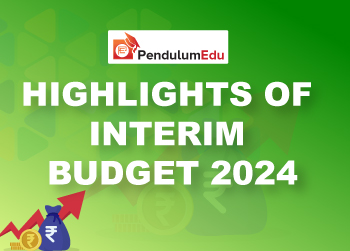Topic: Indian Economy/Financial Market
1. Between April 2000 and September 2024, inflows of foreign direct investment (FDI) into India surpassed the $1 trillion mark.
- The total amount of FDI from April 2000 to September 2024 was $1,033.40 billion, according to data from the Department for Promotion of Industry and Internal Trade (DPIIT).
- Equity, reinvested earnings, and other capital are all included in the total amount of foreign direct investment.
- Approximately 25% of the foreign direct investment entered through Mauritius.
- Singapore (24%), the United States (10%), the Netherlands (7%), Japan (6%), the United Kingdom (5%), and the United Arab Emirates (3%), came next.
- Germany, Cyprus, and the Cayman Islands each contributed 2%.
- According to data, India got $177.18 billion from Mauritius, $167.47 billion from Singapore, and $67.8 billion from the United States between April 2000 and September 2024.
- The services industry, computer software and hardware, telecommunications, trading, construction development, automotive, chemicals, and pharmaceuticals are the main industries drawing the greatest amount of these inflows.
- The Commerce and Industry Ministry reports that India has received $667.4 billion in FDI overall between 2014 and 2024.
- Compared to the previous ten years (2004–14), this is a 119% increase.
- Over 2014–24, FDI equity inflows totalling $165.1 billion were made into the manufacturing sector.
- In comparison to 2004–14, when inflows totalled $97.7 billion, this is a 69% increase.
- In the majority of industries, FDI is permitted via the automatic method.
- Government permission is necessary for foreign investors in industries such as media, insurance, telecom, and pharmaceuticals.
- A foreign investor must first receive approval from the relevant ministry or department in order to proceed with the government approval process.
- An international investor using the automatic route merely needs to notify the RBI following the investment.
- FDI is now prohibited in industries such as lottery, gaming and betting, chit funds, Nidhi Company, real estate, and tobacco-based cigar, cheroot, cigarilo, and cigarette production.
Topic: RBI
2. The RBI's most recent round of the Survey of Professional Forecasters (SPF) on Macroeconomic Indicators has lowered the Real GDP growth for FY25 downward to 6.80%.
- In the previous round (October), real GDP growth for FY25 was kept at 6.90%.
- The SPF panelists reduced their forecasts for FY26 real GDP growth from 6.7% in the previous round (October) to 6.6%.
- According to the RBI-conducted Survey of SPF, they projected GDP growth to be between 6.1 and 7.7% for FY25 and between 6.0 and 7.2% for FY26.
- For FY25, real gross fixed capital formation (GFCF) and real private final consumption expenditure (PFCE) are predicted to expand by 7.9% (unchanged) and 6.2% (6.5% in the previous round), respectively.
- The real gross value added (GVA) growth estimate was slightly lowered by the survey panelists to 6.7% for FY25 and 6.4% for FY26.
- According to the regular survey, annual headline inflation based on CPI-Combined is anticipated to be 4.8% in FY25 (compared to 4.5% in the previous survey) and 4.3% in FY26 (compared to 4.4% in the previous survey).
- The RBI's updated estimate of 4.8% CPI inflation for FY25 is in line with the SPF's revised estimate.
Topic: Reports and Indices
3. The Unified Payments Interface (UPI) in India has been successful in increasing equitable economic growth and expanding financial inclusion.
- A recent study by IIM and ISB said that UPI has made it possible for underserved groups, such as subprime and new-to-credit borrowers, to obtain formal credit for the first time.
- The success of UPI can be replicated in other nations, according to the report "Open Banking and Digital Payments: Implications for Credit Access."
- According to the report, India can take the lead in assisting them in implementing the fintech system.
- The study also demonstrates that default rates did not increase in spite of the lending surge, demonstrating that UPI-enabled digital transaction data assisted lenders in expanding responsibly.
- Since its introduction in 2016, UPI has revolutionized financial access in India by facilitating smooth digital transactions for 50 million merchants and 300 million consumers.
- The report found that by October 2023, UPI accounted for 75% of all retail digital payments made in India.
- According to the report, there was a 7% increase in credit availability for every 10% increase in UPI transactions.


Topic: Reports and Indices
4. The RBI's latest round of bi-monthly consumer confidence survey indicates that weakening sentiments have caused a slight fall in consumer confidence.
- In November 2024, the current situation index (CSI) decreased by 0.7 points to 94.0.
- In the latest survey, the future expectations index (FEI) increased by 0.5 points to 121.9.
- In comparison to the previous survey round, households' median impression of current inflation increased by 30 basis points (bps) to 8.4%.
- The three-month median inflation expectation decreased by 10 basis points to 9.1%.
- It increased by 10 basis points to 10.1% for the upcoming year.
- Compared to the last survey, fewer households predicted rising inflation over the next three months.
- Households' one-year pricing expectations are significantly correlated with the cost of food and housing.
Topic: Miscellaneous
5. The Asian Development Bank (ADB) has approved a $350 million policy-based loan to assist India in modernizing and bolstering its logistics industry.
- The second subprogram will be funded by the loan. It will assist the Indian government in developing institutional frameworks, planning, and policy at the state and local levels.
- India's industrial exports rose from $39.6 billion to $317.4 billion between 2000 and 2022, while its products exports rose from $48.5 billion to $467.5 billion.
- By 2030, the government wants to export $2 trillion worth of goods and services.
- The ADB said that by increasing productivity and facilitating the flow of products, its initiative is assisting India in reaching this goal.

Topic: RBI
6. Sanjay Malhotra has been appointed as RBI Governor.
- Revenue Secretary Sanjay Malhotra has been appointed as 26th Governor of the Reserve Bank of India (RBI).
- His tenure will begin on December 11, 2024, and will last for three years.
- He will succeed Shaktikanta Das, who has completed a six-year term as the RBI Governor on December 10, 2024.
- Sanjay Malhotra played a key role in formulating tax policies, including those for direct and indirect taxes.
- He has also served as Secretary in the Department of Financial Services at the Ministry of Finance.
- Shaktikanta Das assumed office as the 25th Governor of the RBI on December 12, 2018, and his term was extended in 2021.
Topic: Banking/Financial/Govt Schemes
7. Bima Sakhi Yojana launched by Prime Minister Modi to empower women aged 18 to 70 years.
- On 9 December, LIC’s Bima Sakhi Yojana launched, and the foundation stone of the main campus of Maharana Pratap Horticultural University at Panipat in Haryana laid by PM Narendra Modi.
- Bima Sakhi Yojana, an initiative of the Life Insurance Corporation of India, is designed to empower women in the age group of 18 to 70 years.
- They will be given special training and a stipend for the first three years to promote financial literacy and insurance awareness.
- After training, they can work as LIC agents, and Graduate Insurance Sakhis will get an opportunity to qualify for the role of Development Officer in LIC.
Topic: RBI
8. MuleHunter unveiled by the RBI to prevent digital frauds.
- The introduction of an Artificial Intelligence (AI) and Machine Learning (ML)-based model named MuleHunter has been announced by the Reserve Bank of India (RBI).
- AITM is to prevent and reduce digital fraud through the use of mule accounts.
- This public infrastructure facility has been developed by the Reserve Bank Innovation Hub (RBIH), Bengaluru, to help banks address the issue of mule bank accounts expeditiously and reduce digital frauds.
- MuleHunter is basically an infrastructure-level setup that will use the database of all the banks and all other payment system operators.
- Its AI engine will be trained to be able to identify fraud in the financial system more effectively.
- Banks, card systems, and other institutions are free to use their own fraud detection systems, but they can also use MuleHunter in addition.
- The idea behind launching MuleHunter is for RBI to create an infrastructure-level facility that can be used by others with multiple participants.
Topic: Reports and Indices
9. As per the UBS report, India’s billionaire count has reached to 185.
- India's billionaires witnessed a sharp increase as India reached to third position in the global billionaire count list.
- India is only behind from China and US.
- India witnessed a surge of billionaire over 20 per cent to 185 in 2024, from 153 in 2023.
- Chinese economy saw a decline in the billionaire count.
- From 2015 to 2020, billionaire wealth grew globally at an annual rate of 10 per cent.
- The total wealth of India's billionaire club has almost tripled by 263 per cent to $905.6 billion.
- Between 2015 and 2020, the total wealth of Chinese billionaires has increased by more than double.
Topic: RBI
10. RBI introduced podcasts as a tool for the dissemination of useful information.
-
Reserve Bank of India will launch podcasts for wider dissemination of information related to interest to the public.
- In recent years, RBI has expanded its communication toolkit and techniques to enhance transparency and better connect with the people.
- The RBI as a central bank has been spreading public awareness activities including through social media over the last few years.
- RBI is using traditional as well as new-age communication techniques as a key part of its toolkit to ensure transparency and a greater impact of its decisions.
- RBI has revised GDP forecast for 2024-25 to 6.6 per cent from 7.2 per cent earlier.



 Previous
Previous 
 Latest
Latest 








Comments